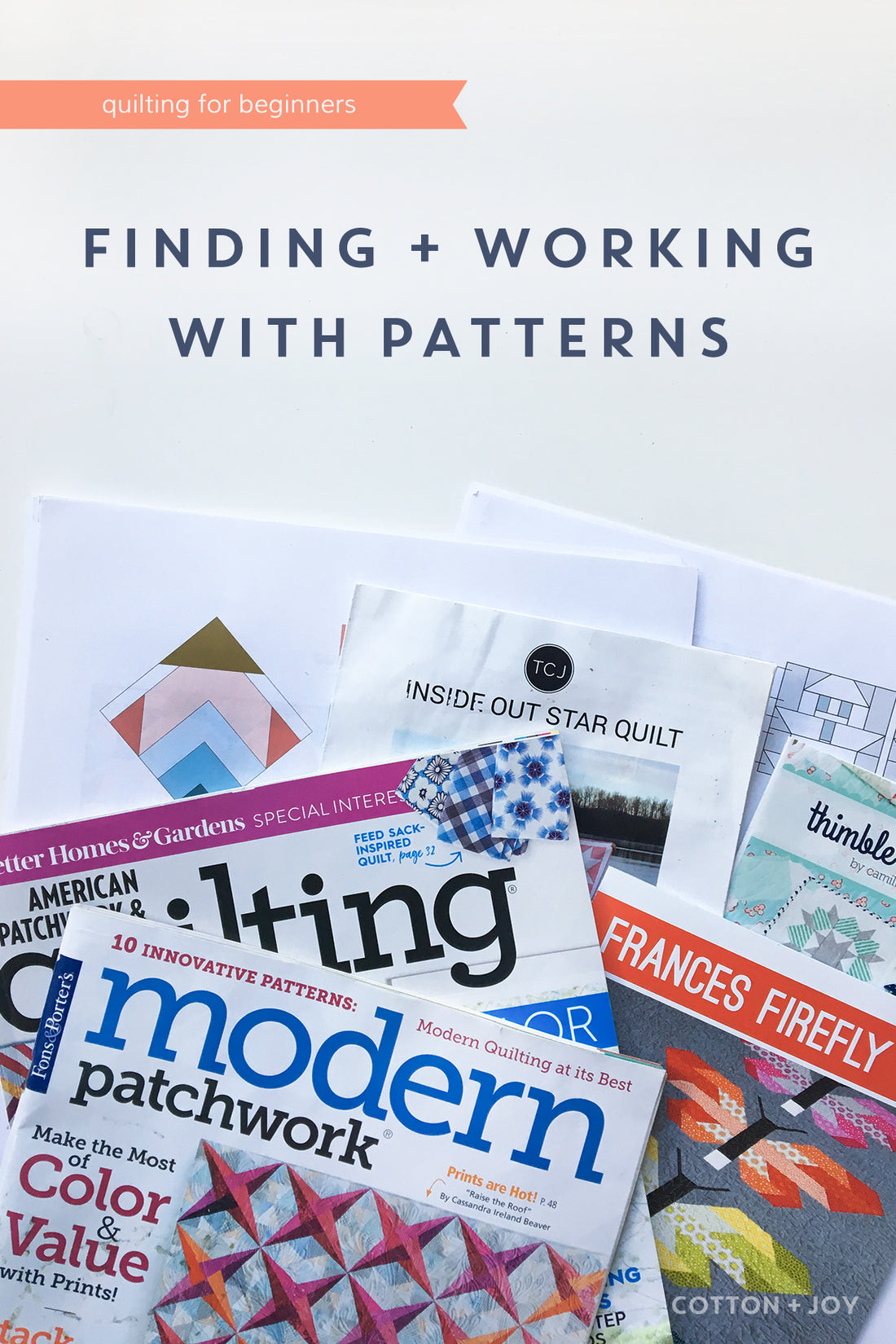
Finding And Working With A Quilt Pattern
Share
Welcome to the Quilting for Beginners series! This is the second post in the series where I share tips for finding and working with a quilt pattern. You can read other posts in this series here.
While a lot of the fun of quilting for me comes from creating and then making my own patterns, as a beginner working with a pattern made by an experienced quilt designer is the way to go.
Fortunately there are tons of patterns out there, but that can also be overwhelming so here are some tips for choosing and then working with a quilting pattern.

Finding A Pattern
Patterns are everywhere once you start looking! They are in magazines, books, or sold individually, or available online for free.
I prefer purchasing individual patterns online as PDFs. This means I support pattern designers directly and avoid adding clutter in my house.
If you’re looking for free patterns, you can find some by pattern designers on their sites. Also manufacturers release free patterns along with new collections so look through their lookbooks online for those links.
Difficulty Labels

Whether it’s a PDF or a printed pattern, they will list on the cover the difficulty level - beginner, intermediate, or difficult. As you begin your quilting journey, pay attention to those labels and stick to beginner patterns until you gain more confidence and learn the skills needed for more advanced patterns.
Yardage Requirements

One of the best things about working with patterns is the lack of quilty math! Patterns layout not only the steps needed to achieve the quilt top but also all the fabric requirements and the cuts you have to make, from the quilt top pieces, to the backing and binding. Pay close attention to those requirements and when in doubt, always get more fabric than required.
Read Through First
It's always, always a good idea to read through the entire pattern before starting. Some of the things I always highlight or pay special attention to are -
- Seam Allowances: Most patterns have the standard 1/4 inch seam allowance, but double check this is the case for your pattern and note any seam allowance changes.
- Pressing Seams: This can change from pattern to pattern, and sometimes from step to step within a pattern. I always make sure to note if it's seams open all the way or if I'm pressing seams one way or another, I make sure to highlight or underscore this portion to avoid mistakes later.
- Write notes on margins: As you read through the pattern, make notes on the margins! I always write in the name of my fabrics if different from the pattern or anything else that will be helpful when piecing my quilt top.
